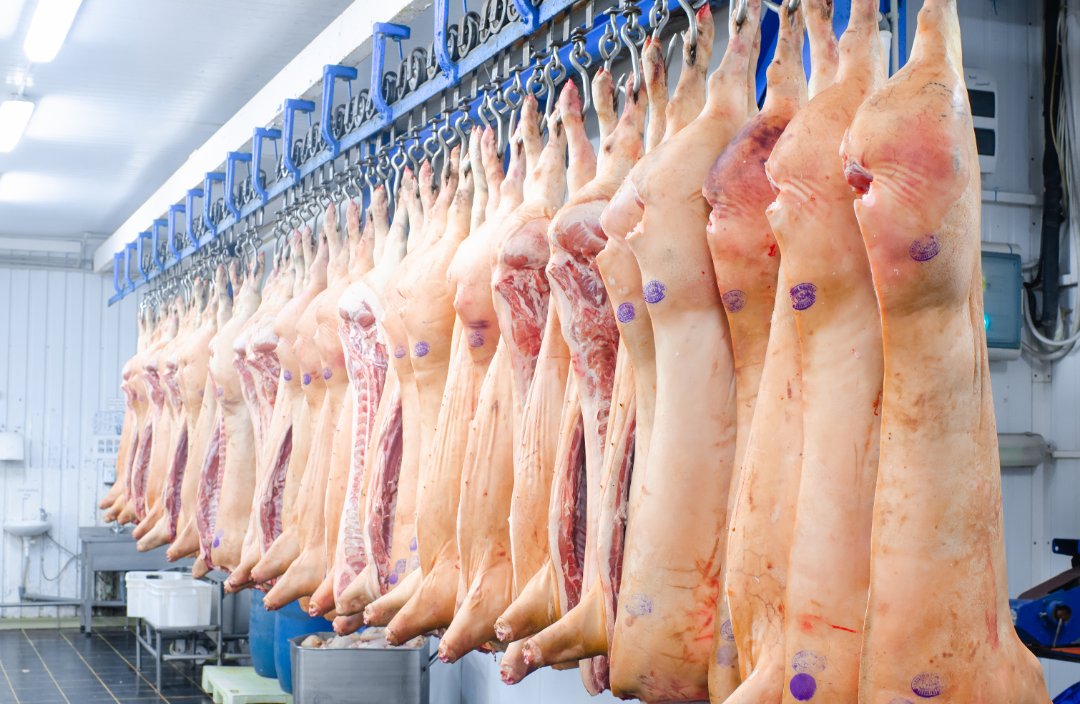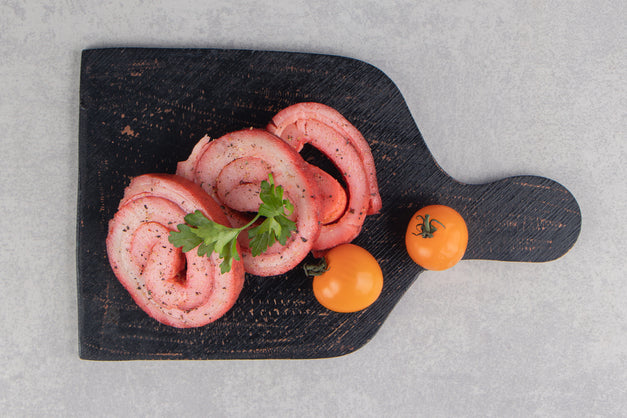Have you ever wondered, "Are pork skins good for you?" This popular snack, which is often enjoyed for its crunch and flavor, has sparked curiosity about its health benefits. Pork skins, also known as pork rinds, are a unique treat made from pork skin that has been fried or roasted. Many people love them, but are they as unhealthy as they seem?
Let’s explore what makes pork skins different, their nutritional value, and why they might be a better snack choice than you think. Let’s find out if pork rinds are healthy and why they’ve become a favorite for many.
What Are Pork Skins?
Pork skins, also called pork rinds, are made from the skin of a pig. The preparation involves cleaning and cooking the pork skin until it becomes crispy and light. This is typically done by frying or roasting the skin in high heat.
Unlike pork-based snacks like bacon or sausages, pork skins are made from just the skin without added meat. They have a distinct crunch, which makes them a satisfying snack for those craving something crispy. Pork skins are often seasoned with spices or salt, giving them a bold and savory flavor.
The Nutritional Breakdown of Pork Skins
Pork skins, often underestimated, have a fascinating nutritional profile that can fit well into many diets. Let’s break it down:
-
Protein: One serving of pork skins contains about 8–10 grams. Protein is essential for repairing and building tissues, supporting the immune system, and keeping you full between meals. Pock skins offer more nutritional value than chips, which have little to no protein.
-
Fats: Pork skins provide around 5–8 grams of fat per serving. These fats include saturated and monounsaturated fats, which can be part of a healthy diet when consumed in moderation. Fat also contributes to the snack’s rich flavor and satisfying texture.
-
Carbs: One of the best features of pork skins is their zero-carb content. This makes them an excellent option for those on low-carb or keto diets who want to avoid snacks that spike blood sugar levels.
-
Calories: A serving of pork skins has approximately 80–120 calories. Compared to potato chips, which have over 150 calories per serving, pork skins can be a lower-calorie alternative.
Compared to snacks like pretzels or chips, pork skins stand out because they offer more protein, fewer carbs, and a better macronutrient balance. This makes them a smart choice for anyone looking to snack healthier while staying satisfied.
Health Benefits of Pork Skins
The health benefits of pork skins go beyond their delicious crunch. Let’s explore why they’re more than just a tasty treat:
-
High Protein for Muscle Support
Protein is crucial for repairing muscles and supporting overall body function. Pork skins provide a solid dose of protein in every serving, which helps maintain muscle mass, especially for active individuals or those following weight-loss diets. -
Zero-Carb Perfection
For people on low-carb or ketogenic diets, pork skins are a lifesaver. Their zero-carb content means you can enjoy them guilt-free without worrying about breaking your diet plan. Unlike carb-heavy snacks, pork skins won’t cause a spike in blood sugar levels, making them suitable for those managing diabetes or blood sugar concerns. -
Weight Management Benefits
Pork skins can help you feel full and satisfied thanks to their protein and fat content. This reduces the likelihood of overeating or snacking on less nutritious options. High-protein snacks like pork skins are often associated with better appetite control and lower overall calorie intake. -
Collagen and Joint Health
Pork skins contain collagen, a protein that supports healthy skin, joints, and connective tissues. Regular consumption of collagen-rich foods can promote elasticity in the skin and reduce joint discomfort. -
Quick Energy Source
The combination of protein and fat provides a steady source of energy. Unlike sugary snacks that cause energy crashes, pork skins deliver sustained energy, making them perfect for busy days or quick refueling. -
Low in Additives
Many pork skins are made with pork skin, salt, and seasonings. This makes them a cleaner alternative to highly processed snacks with artificial additives and preservatives.
These benefits make pork skins a versatile and nutritious choice for those seeking a satisfying snack that aligns with their health goals.
Why Pork Skins Make a Great High-Protein Snack
Protein is a vital nutrient for the body, and pork skins are an easy and delicious way to include more of it in your diet. Each serving delivers a solid amount of protein, making pork skins a practical choice for anyone needing a quick boost.
For active individuals, such as athletes or gym-goers, protein helps repair and build muscles after a workout. Pork skins are convenient for refueling without relying on sugary or carb-loaded snacks. They’re portable, easy to store, and ready to eat anytime, making them a great post-workout option.
Beyond fitness, pork skins are also ideal for managing appetite. Protein takes longer to digest than carbs, which means it keeps you feeling full for longer. Snacking on pork skins between meals can help reduce hunger and prevent overeating at your next meal.
Fat Content in Pork Skins Explained
Pork skins are known for their mix of fats, including saturated and monounsaturated fats. Saturated fats provide quick energy, while monounsaturated fats are considered heart-friendly when consumed in moderation.
Each serving of pork skins contains about 5–8 grams of fat, depending on the preparation method. Although they are more fat than many other snacks, pork skins do not contain harmful trans fats in some processed foods.
When asked, “Are pork skins good for you? " It’s important to remember that they can fit into a balanced diet. Enjoy them in moderation as a flavorful energy source and healthy fats, especially as a low-carb alternative.
How Pork Skins Fit Into Low-Carb Diets
For those wondering, “Are pork rinds healthy” on a low-carb diet, the answer is often yes! Pork skins are a top choice for low-carb and ketogenic eaters due to their zero-carb content.
Unlike carb-heavy snacks like chips, pork skins provide a satisfying crunch without impacting blood sugar levels. Their combination of protein and fat helps meet the macronutrient goals of keto diets, making them a convenient and delicious snack option.
Whether enjoyed plain or paired with low-carb dips, pork skins are perfect for low-carb diets. They offer a guilt-free way to satisfy cravings while sticking to your health goals.
Balancing the Health Aspects of Pork Skins
While pork skins have nutritional benefits, they are often high in sodium. Moderation is key to enjoying them responsibly. If you’re asking, “Are pork skins good for you,” the answer depends on how they fit into your diet.
Pair pork skins with fresh, low-sodium foods like raw veggies or unsalted dips to balance their salt content. Use them as an occasional snack rather than a daily habit.
You can enjoy their crunch and flavor by balancing pork skins with other nutrient-rich foods while maintaining a healthy, well-rounded diet.
Conclusion
Pork skins are a versatile snack with high protein and zero carbs, making them a fantastic option for low-carb and keto diets. They are a satisfying, crunchy treat that aligns with various dietary goals when enjoyed in moderation. With their unique nutritional profile, pork skins can support active individuals' weight management, muscle maintenance, and even energy needs.
For those seeking high-quality, responsibly crafted pork skins, Red Field Ranch provides a delicious selection you can trust. Add them to your snack options for a flavorful, guilt-free treat that fits your lifestyle.
Frequently Asked Questions
Q) What are pork skins made of?
Pork skins, also known as pork rinds, are made from the cleaned and cooked skin of a pig, usually fried or roasted until crispy.
Q) Are pork skins a good source of protein?
Yes, pork skins are high in protein, providing around 8–10 grams per serving, which makes them a great snack for muscle maintenance and hunger control.
Q) Can pork skins fit into a low-carb or keto diet?
Absolutely! With zero carbs, pork skins are ideal as a crunchy, satisfying snack for low-carb and ketogenic diets.
Q) Are there any downsides to eating pork skins?
Pork skins can be high in sodium, so it’s important to enjoy them in moderation to avoid excess salt intake.
Q) Where can I buy high-quality pork skins?
Premium pork skins crafted with care are available at Red Field Ranch, a trusted source for delicious and responsibly made snacks.
















Leave a comment